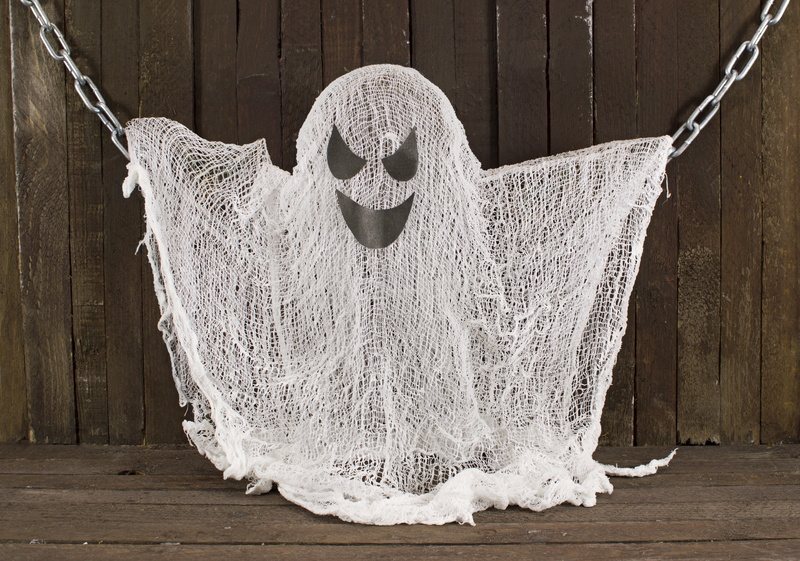Protecting Your Freezer: Essential Tips for Non-Use Storage
Posted on 13/06/2025
Protecting Your Freezer: Essential Tips for Non-Use Storage
If you own a freezer, there may be times when you need to put it into long-term storage--during a move, renovation, seasonal use, or simply because you don't need it for a while. However, improperly storing your freezer can lead to mold, foul odors, pest infestations, or even permanent damage. Whether you have a deep chest freezer or an upright freezer, taking the right steps ensures it stays in optimal condition and is ready when you need it next.
Why Non-Use Storage Requires Care
Many people assume that simply unplugging and closing the freezer is enough, but this common mistake can result in costly repairs or a ruined appliance. Freezers are designed to operate continuously, and storing them improperly during periods of non-use can lead to the growth of mold and mildew, mechanical issues, and loss of energy efficiency. Protecting your freezer during non-use storage helps extend its life, maintain hygiene, and save money on future repairs.
The Importance of Proper Freezer Storage
- Prevents mold and mildew: Moisture left behind can quickly promote the growth of harmful bacteria.
- Stops unpleasant odors: Food residue and moisture can leave behind foul smells.
- Guards against mechanical issues: Internal parts can degrade without special care, especially in harsh environments.
- Improves longevity: A well-maintained freezer lasts much longer.
- Keeps pests away: Rodents and bugs are attracted to leftover food particles.

Step-by-Step Guide: How to Prepare Your Freezer for Non-Use Storage
Below is a comprehensive guide with essential tips for protecting your freezer during periods of non-use:
1. Empty the Freezer Completely
Before starting the non-use storage process, remove all food items from the freezer. Check expiration dates and avoid the temptation to leave anything inside, even for a short time.
- Donate or cook usable food: Share items with neighbors or use up perishables.
- Dispose of expired or questionable items: Don't risk spoilage and bad odors.
2. Unplug and Defrost the Freezer
Safety comes first! Unplug the unit from the power source. Next, allow the freezer to defrost thoroughly. Depending on the freezer's size and the amount of ice buildup, this can take a few hours to a day.
- Open the door: Leave the door ajar to hasten defrosting.
- Use towels: Place absorbent cloths to soak up dripping water as the ice melts.
- Avoid using sharp tools: Chiseling ice can damage the freezer's interior and components.
3. Clean the Interior Thoroughly
Once defrosted, it's time to deep-clean. Lingering food residues or spills are a recipe for mold and odors if left unchecked. Use the following method for best results:
- Mix a solution: Combine a quart of warm water with 2 tablespoons of baking soda for a non-toxic, odor-absorbing cleaner.
- Wipe all surfaces: Use a soft cloth to clean shelves, drawers, walls, and all crevices.
- Clean the door seal: Gently scrub the gasket to remove debris that could compromise the door's seal.
- Dry completely: Leave the freezer open until every surface is bone dry.
4. Address Moisture and Eliminate Odors
A damp or humid interior leaves your freezer vulnerable to mold. After cleaning, take these additional precautions:
- Place an odor absorber: Activated charcoal, baking soda, or commercial odor-absorbing packs help keep the internal environment fresh.
- Check for hidden moisture: Use a dry towel to wipe the corners and rubber gasket edges.
- Leave the door ajar: Always store your freezer with the door slightly open to allow air flow and prevent mold.
5. Prepare the Exterior
It's easy to overlook the outside of the freezer, but dust, grime, and pests can create problems over time. Protect your freezer by:
- Wiping the exterior: Clean with mild detergent and water; dry thoroughly.
- Check and clean coils or vents: Dust buildup reduces energy efficiency for when it's next used.
- Inspect the power cord: Look for signs of wear or damage; replace if necessary.
6. Find the Right Storage Location
Where you store your freezer during periods of non-use is just as important as how you prep it. The right environment ensures the appliance isn't exposed to excess humidity, temperature extremes, or critters.
- Indoor is best: If possible, keep the freezer in a climate-controlled space such as a basement, utility room, or garage.
- Shade and elevation: Avoid direct sunlight and place the freezer on blocks or a platform to keep it off cold, damp floors.
- Avoid outdoor storage: Outdoor sheds and patios expose the freezer to weather and temperature fluctuations.
- Ventilation: Make sure airflow is not blocked around the appliance to prevent mildew and musty smells.
7. Secure the Door and Prevent Mold
Never close the freezer door airtight when storing it unplugged! This is the #1 culprit for mold and mildew issues during non-use storage. Instead:
- Use a spacer: Place a rolled-up towel, sponge, or special freezer-door wedge to keep the door cracked open by at least an inch.
- Check periodically: If the freezer is stored for several months, open and inspect the interior for moisture or odors every few weeks.
8. Protect Against Pests
Rodents and insects may seek out unused appliances, especially if there are food residues or the environment is damp. To stop pests:
- Place traps around the freezer: Especially important in garages or basements.
- Seal any cracks: Repair gaps in the walls or floors near your storage area.
- Cover the freezer: Use a breathable appliance cover--not plastic, which traps moisture.
9. Maintain Documentation and Regular Checks
While the freezer is in storage, keep:
- User manual handy: For reference on maintenance schedules or reactivation steps.
- Warranty paperwork: In case of any issues upon restarting.
- Visual inspections: Check for dust buildup, leaks, or pest activity every month.
10. Restarting Your Freezer After Storage
When you're ready to use your freezer again, follow these steps for a safe and efficient restart:
- Inspect before plugging in: Check that the interior is clean, the door seals properly, and the cord is intact.
- Allow to reach temperature: Plug it in and let it run empty for at least 4 hours (preferably overnight) to achieve a steady temperature.
- Stock with food: Only refill once it's back to the ideal freezing temperature (usually 0?F or -18?C).
Frequently Asked Questions about Non-Use Freezer Storage
Can I store my freezer for a long time turned off?
Yes, but you must follow the above steps for cleaning, drying, and ventilating. Leaving a closed, unplugged freezer without preparation is likely to create mold growth and cause lasting odors.
Should I cover my freezer during storage?
A breathable cover is best to keep off dust and pests; never use airtight plastic, which locks in moisture and fosters mold.
Is it safe to store a freezer in a non-climate-controlled garage?
If you must, choose a shaded, dry area and avoid temperature extremes. Check more often for signs of moisture, pests, and mildew, as garages are riskier than indoor spaces.
Top Tips for Protecting Your Freezer During Extended Non-Use
- Always store unplugged with the door propped open.
- Clean and dry meticulously before putting in storage.
- Use odor absorbers like baking soda or activated charcoal.
- Place in a cool, dry, and well-ventilated area.
- Check periodically for signs of mold, mildew, or pests.
- Upon restarting, allow it to reach freezing temperature before restocking with food.
Common Mistakes to Avoid with Freezer Storage
- Leaving the door closed: This will trap moisture and cause mold and odors.
- Not defrosting or drying completely: Even a little moisture can create problems.
- Overlooking the exterior: Dust and pests can damage the appliance from the outside in.
- Using plastic sheeting: Traps condensation, causes rust and mold.
- Storing outdoors: Subjecting your freezer to rain, humidity, or direct sun will greatly diminish its working lifespan.

Protect Your Investment: Keep Your Freezer in Peak Condition
A freezer is a significant household investment. You want it to last for years, run efficiently, and keep your food safe. Protecting your freezer during non-use periods isn't just about keeping it clean--it's about preventing mechanical breakdowns, energy loss, and avoidable expenses. From thorough cleaning and drying to correct storage location, each step is crucial for long-term maintenance.
If you're unsure about the specifics for your freezer model, always consult your owner's manual for special instructions. And remember, a little effort in preparing your freezer for non-use storage now can save you from costly frustrations and extend the lifespan of your appliance for many years to come.
Conclusion: Essential Freezer Storage Tips Recap
In summary, protecting your freezer for non-use storage involves more than just unplugging the appliance. By following these expert-backed tips--emptying, defrosting, deep cleaning, drying, ventilating, selecting the right spot, pest-proofing, and checking regularly--you'll keep your freezer mold-free, odor-free, and ready for action. With proper care, your appliance will serve you faithfully for many more years.
For anyone looking to get the most from their appliances, proactive freezer care during periods of non-use is a smart, simple way to ensure longevity, hygiene, and hassle-free performance.
Related Resources:
